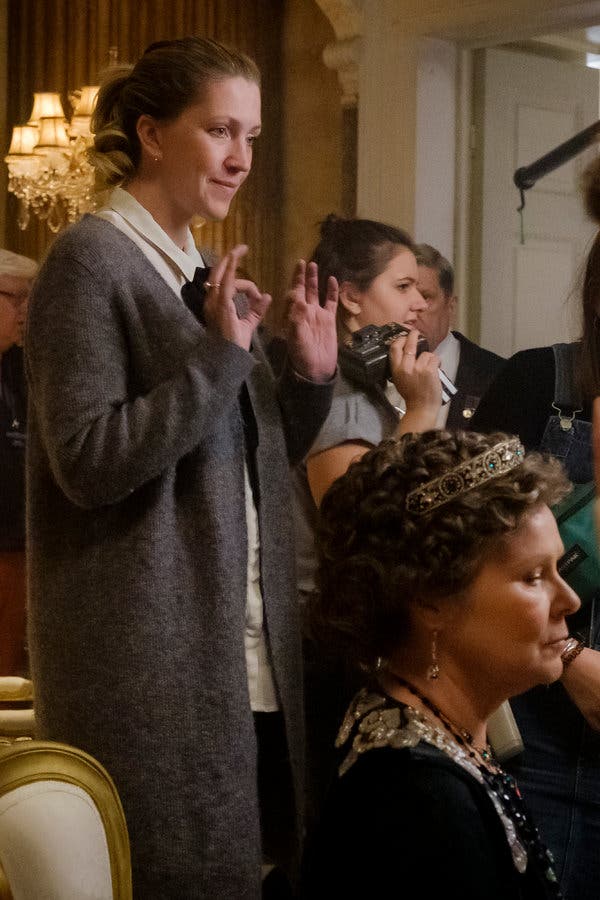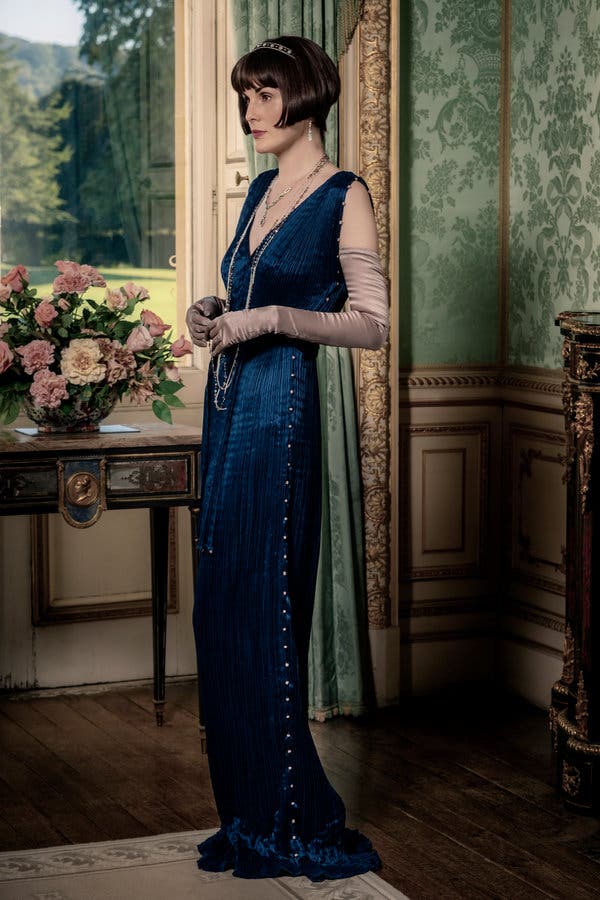LONDON — One of the most feted designers here this week — someone whose work has been admired by the Duchess of Cambridge — will not, actually, participate in London Fashion Week.
Yet it is possible the slinky 1920s gowns, cloche hats and tiaras created or sourced by Anna Mary Scott Robbins, the costume designer behind the big screen version of the small screen hit “Downton Abbey,” which opens in Britain on Sept. 13 and in the United States on Sept. 20, may be as influential as any pieces about to appear on the catwalk.
They represent the yin to London Fashion Week’s yang: a reimagining of historic styles that will contrast with some of the more conceptual, boundary-pushing looks for which the city is famous.
So expect to see Lady Mary (played by Michelle Dockery), the eldest daughter of the Crawley family, managing the estate in a gender-bending pinstripe shirt, necktie and waistcoat. Get ready for Edith (Laura Carmichael), Lady Mary’s younger sister and, since her marriage, the wealthy and socially superior Marchioness of Hexham, radiating glamour in a patterned velvet coat or heavily beaded gowns. And check Lady Cora (Elizabeth McGovern), as their mother, the Countess of Grantham, wearing a heavily embroidered blouse fashioned from a tulle scarf to welcome King George V and Queen Mary at Downton.

A few weeks before the film premiere, Ms. Robbins, 41, whose six-foot frame was clad in a practical black jumpsuit, sat in her compact studio in southwest London amid costumes for her next film (“Last Letter From Your Lover”), a mood board, a sewing machine and a well-stocked book shelf, to talk about crafting “Downton” style, and how it relates to clothes in the real world.
This interview has been edited and condensed.
Even though you are creating 1920s clothes, does the contemporary world inspire your work?
My starting point was the designers of the time. But this is the thing, what I’ve always said is that I love fashion and am very aware of fashion and the designers out there, and am digesting information as a designer in this modern age. So how I curate the costumes from the 1920s must to some extent be affected by my viewpoint as a contemporary woman.
Can you give an example?
I wanted to dress Lady Mary in a Fortuny Delphos gown. Mariano Fortuny didn’t design dresses with a V-neck, but I wanted to do something that felt contemporary and relevant so I reimagined the shape of that original dress and played around with various necklines and settled on this one, which is more dynamic, edgier and a bit cooler for Lady Mary. So that’s how I modernized something that was very much of its time.
I always look at interesting necklines for Edith. And she really suits a pussy bow. So we added this tawny russet silk pussy bow to an original dress under a velvet coat that lifted the costume so that it had a focal point. Pussy bows are from current catwalks but were also fashionable in the 1920s, so that’s the balance I try to find: pieces that sit perfectly within that world but that are understood by a modern audience, so they are coveted.
Did you mix any contemporary materials in with the vintage?
We did. There was a Fortuny velvet, so a completely contemporary velvet — it’s peachy orangy, called fawn, and it has tiny little flecks of gray. I’ve always loved Fortuny and admired his palette, so we brought it through for one of Lady Edith’s coats.
We sourced lace from the French company Sophie Hallette, which we would dye and incorporate into pieces. For a tunic for Lady Cora, there just wasn’t enough old lace to be able to cut a pattern out of it. So there’s lace panels and then pleated chiffon and it was all dyed interestingly because the lace has a sort of satin sheen to it so we had to dye it slightly darker than the rest of the chiffon so that it felt tonally complete.
Do you see similarities between your way of working and that of a contemporary designer?
I love the way Maria Grazia Chiuri looks at a textile, or just one piece from the Dior archives, and then this entire collection will come out of it. I do that with the 1920s. I pull something that is completely original and look at its construction and pull it apart and reassemble it in a very relevant way for our characters as seen by a modern audience.
And editing the costumes is editing a collection. You know when some pieces are stronger than others.

Do you watch fashion shows?
I have been to some shows, like Dior, Valentino and Burberry. I go because I love the theater and a show is exciting — it can make the hair on your arms stand up if beautiful or innovative or surprising. Molly Goddard is fun and her fashion makes you smile.
I’m interested in Givenchy, because it has just rocketed and I’ve always loved heritage labels and how they kept the essence which made them what they were. I look for print, color, textile craft, cutting technique, beautiful storytelling, inspiration and things that are beautiful. Every designer has a different forte that I might subscribe to for that reason.
I might see beautiful color combinations, like aubergine with a sage green, which might become a starting point within a scene. Valentino’s use of colors is inspired.
With Iris van Herpen, it’s how technologically advanced she is. I can’t wait to see what she is physically able to achieve in terms of wearable art, and where the dividing line is between wearable art and clothing.
Who do you follow on Instagram?
Rick Owensis interesting because Fortuny has worked with him. He’s very opposite to a lot of my design sensibilities, but he is unique and his work is thought-provoking and you can be interested in different design sensibilities. I have to be interested in everything because I don’t know where I am going to be taken next.
I’ve recently started following Clare Waight Keller from Givenchy, but her personal account because I think she gives a beautiful amount of information. There is a back story and still the intrigue of how these couture pieces are put together. I think her style is honest and quite giving. Often the post can be a teaser with no information given, and that’s that. She has a human, approachable way of showing what her world is like as this talented woman in a high-profile job. So if I were better at Instagram, and I spend more time at it, I would like to be able to do that and show that side of my job.







